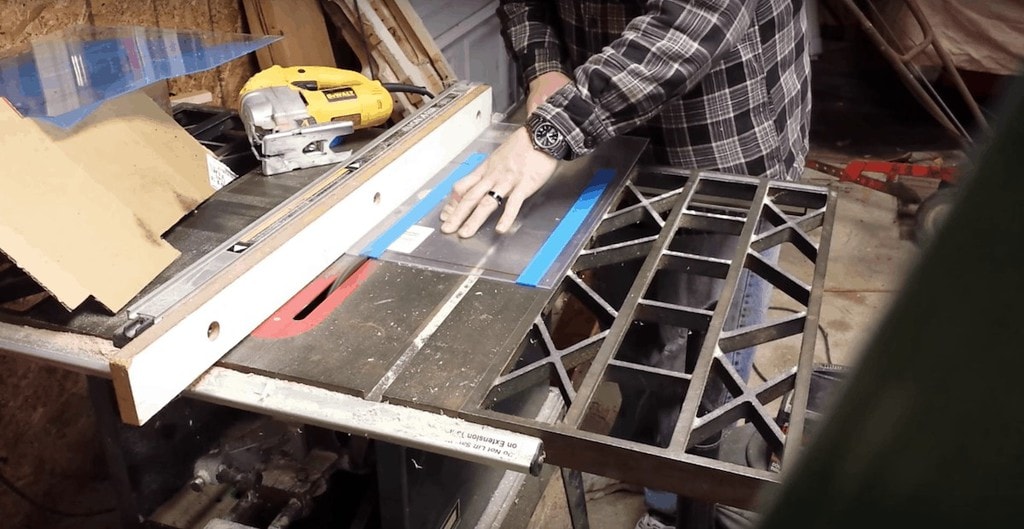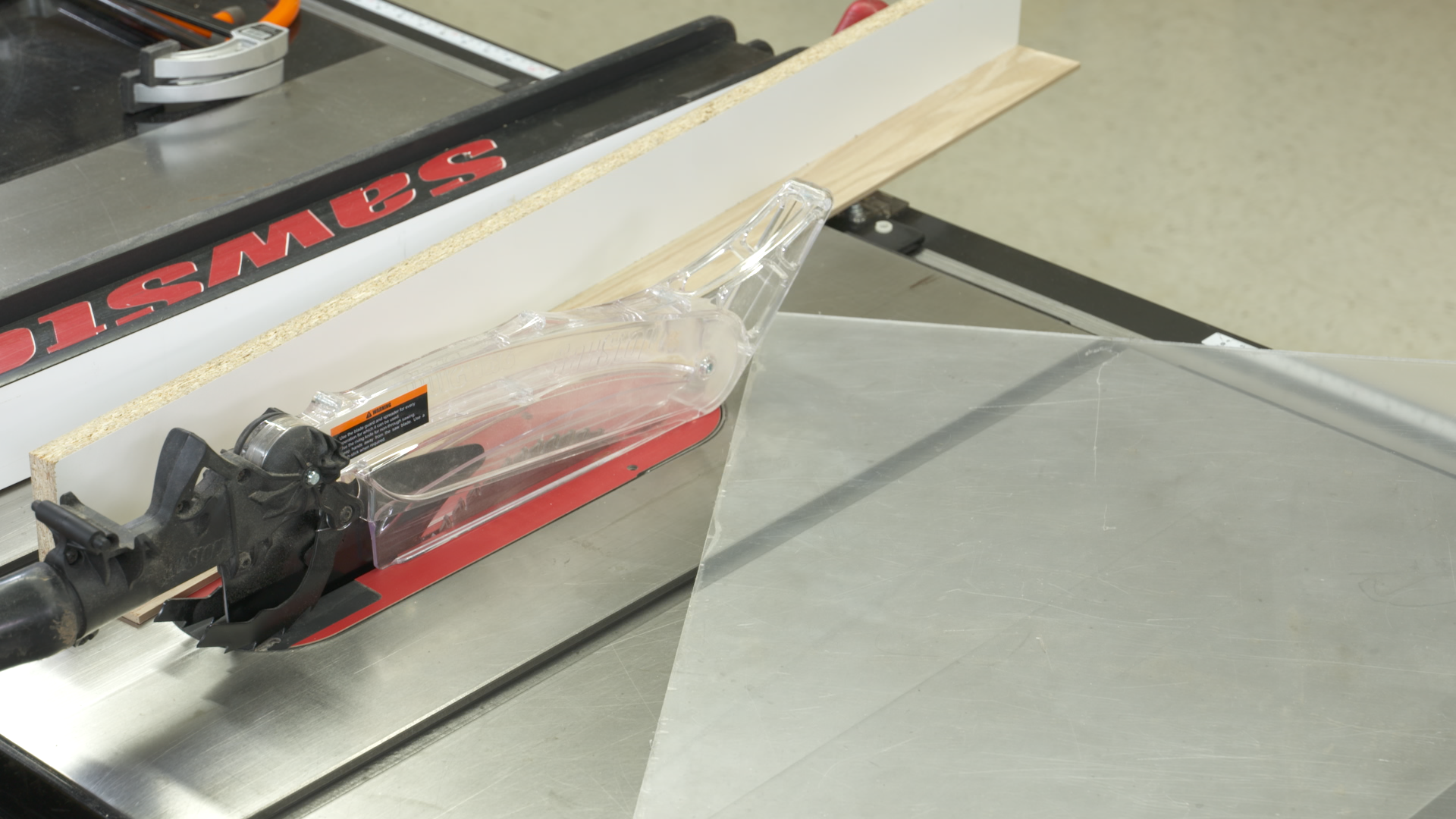Can you cut acrylic with a table saw? It’s a common question for those working with this versatile material. Well, the answer is not as straightforward as you might think. Acrylic is a delicate substance, and cutting it with a table saw requires careful consideration and the right techniques. In this article, we’ll explore the possibilities, limitations, and safety precautions to keep in mind when working with acrylic and a table saw.
Acrylic, also known as Plexiglas or acrylic glass, is a popular choice for various DIY projects, signage, and even some furniture pieces. Its transparent and durable nature makes it appealing for many applications. However, unlike wood or metal, acrylic requires a different approach when it comes to cutting. While a table saw can indeed cut acrylic, it can be a bit tricky due to its tendency to melt or crack under the heat and pressure generated by the saw blade. So, let’s delve deeper into the dos and don’ts of using a table saw to cut acrylic.
Now, before you reach for your saw, it’s important to understand that using the proper tools and techniques is crucial for a successful and safe cutting experience. We’ll discuss the right blade type, the appropriate feed rate, and the use of a support table or sled to minimize the risk of damage to the acrylic sheet. So, if you’re eager to learn how to cut acrylic with a table saw, strap on your safety goggles, grab your measuring tape, and let’s embark on this acrylic-cutting adventure together!
- Choose a blade with fine teeth and a high tooth count.
- Secure the acrylic with clamps or a jig to prevent movement.
- Set the saw’s speed to a low setting.
- Use a slow, steady feed rate to avoid chipping or melting.
- Wear personal protective equipment, such as safety goggles and a respirator.
With these tips, you’ll be able to confidently cut acrylic using your table saw!

Can I Cut Acrylic with a Table Saw?
Acrylic, also known as plexiglass, is a versatile material used in various DIY projects, woodworking, and construction. If you are working on a project that requires cutting acrylic, you may be wondering if a table saw is suitable for the task. In this article, we will explore the feasibility of cutting acrylic with a table saw, safety precautions to take, and alternative tools to consider.
Safety Precautions when Cutting Acrylic
When working with a table saw, safety should always be a top priority. Here are some important precautions to take when cutting acrylic:
1. Wear Protective Gear
Prior to cutting acrylic with a table saw, ensure you are wearing the appropriate safety gear. This should include safety goggles or a face shield to protect your eyes from flying debris, a dust mask to prevent inhalation of acrylic particles, and gloves to safeguard your hands.
2. Choose the Right Blade
Using the right blade is essential for clean, accurate cuts in acrylic. A blade specifically designed for cutting plastic or non-ferrous materials, such as a carbide-tipped or triple chip grind blade, is recommended. These blades have a higher tooth count and alternate bevel teeth that prevent chipping and melting of the acrylic.
3. Adjust the Table Saw Settings
Before cutting acrylic, make sure your table saw is properly set up. Adjust the blade height, fence alignment, and cutting speed to ensure smooth and precise cuts. It is crucial to use a slower cutting speed to minimize heat buildup and prevent the acrylic from melting or warping.
Alternative Tools for Cutting Acrylic
While a table saw can be used to cut acrylic, there are alternative tools available that may provide better results or greater safety. Here are a few options:
1. Circular Saw with a Fine-toothed Blade
A circular saw equipped with a fine-toothed blade designed for cutting plastic can be an effective tool for cutting acrylic. It allows for greater maneuverability and control, especially when working with smaller pieces or intricate cuts.
2. Jigsaw with a Down-cutting Blade
A jigsaw fitted with a down-cutting blade is another viable option for cutting acrylic. This type of blade cuts on the downstroke, which reduces chipping and splintering on the top surface of the acrylic. It is particularly useful for curved or irregular cuts.
3. Score-and-Snap Method
If your project involves straight cuts on thin acrylic sheets, the score-and-snap method can be an efficient and hassle-free approach. This method involves scoring the acrylic with a utility knife or glass cutter and then gently snapping it along the scored line.
Tips for Cutting Acrylic with a Table Saw
If you decide to use a table saw for cutting acrylic, here are some additional tips to ensure successful results:
1. Use a Zero-Clearance Insert
By installing a zero-clearance insert on your table saw, you can minimize the risk of chipping or splintering the acrylic. A zero-clearance insert provides support and stability, reducing the chances of the acrylic getting caught or damaged during the cutting process.
2. Apply Masking Tape
Applying masking tape along the cutting line can help prevent the acrylic from chipping or cracking. The tape provides extra support and stability, reducing the risk of damage during the cutting process. It also helps to mark the cutting line clearly for improved accuracy.
3. Cut in Multiple Passes
Instead of trying to cut through the acrylic in a single pass, it is often better to make multiple shallow passes. This reduces the amount of heat generated and minimizes the risk of melting or warping the acrylic. Take your time and let the saw do the work.
In conclusion, cutting acrylic with a table saw can be done with the right precautions and techniques. However, it is essential to prioritize safety and consider alternative tools if necessary. By following proper safety protocols, choosing the right blade, and adjusting the settings, you can achieve clean, precise cuts in acrylic. Ultimately, the choice of tool will depend on the specific project requirements and your comfort level with different cutting methods. Always remember to measure twice and cut once!
Can I Cut Acrylic with a Table Saw?
- Yes, you can cut acrylic with a table saw.
- Ensure you use a blade specifically designed for cutting acrylic.
- Set the table saw to a low speed to prevent melting or chipping of the acrylic.
- Use a straight-edge guide to ensure a straight and accurate cut.
- Wear appropriate safety gear, such as safety glasses and gloves, when cutting acrylic.
Frequently Asked Questions
In this section, we will address some common questions regarding cutting acrylic with a table saw.
1. What safety precautions should I take when cutting acrylic with a table saw?
When cutting acrylic with a table saw, it is essential to prioritize safety. Start by wearing protective goggles and gloves to shield yourself from any flying debris or sharp edges. Make sure your table saw is equipped with a fine-toothed blade specifically designed for cutting acrylic. Additionally, a cutting guide or fence can help ensure straight cuts, reducing the risk of accidents.
Before cutting, take the time to secure the acrylic material adequately to prevent any movement or vibration during the cutting process. Finally, always use a push stick or a push block to keep your hands a safe distance away from the blade and maintain full control over the material.
2. Can I use a regular wood-cutting blade to cut acrylic with a table saw?
Using a regular wood-cutting blade to cut acrylic is not recommended, as it can cause melting, chipping, or cracking of the material. Acrylic requires a specifically designed blade with a high tooth count and a low tooth angle to achieve clean and precise cuts. These blades have fine teeth that provide a smoother cutting motion, reducing the risk of damage to the acrylic.
Investing in a quality acrylic-cutting blade will not only ensure better results but also prolong the life of your blade and prevent unnecessary damage to the acrylic material.
3. What speed should I set my table saw to when cutting acrylic?
The speed at which you cut acrylic with a table saw is crucial for achieving clean and accurate cuts. Generally, when cutting acrylic, it is best to set your table saw to a lower RPM (revolutions per minute) to avoid overheating the material or causing any melting. A speed of around 3,000 to 4,000 RPM is ideal for cutting acrylic effectively.
Remember that slower speeds provide better control and reduce the risk of the material sticking or chipping. Be sure to check the manufacturer’s recommendations for your specific acrylic material to determine the optimal speed for cutting.
4. Can I use a table saw with a laser guide to cut acrylic?
Using a table saw with a laser guide can be a helpful tool when cutting acrylic. The laser guide projects a thin beam of light onto the acrylic surface, showing the precise line of cut. This can assist in achieving accurate cuts and ensuring straight lines.
However, it is important to note that the laser guide should not be solely relied upon for the accuracy of your cuts. Always use a cutting guide or fence to ensure the acrylic material is properly aligned and to maintain control throughout the cutting process.
5. What should I do if I encounter melting or rough edges when cutting acrylic with a table saw?
If you encounter melting or rough edges while cutting acrylic with a table saw, there are a few possible solutions. First, ensure that your blade is sharp and in good condition. Dull blades can cause more friction, leading to melting or rough edges. Consider replacing the blade if needed.
You can also try reducing the table saw speed or applying a lubricant like WD-40 to the blade to minimize friction. Additionally, using a slower feed rate and avoiding pushing the material forcefully through the blade can help prevent melting and rough edges. Lastly, make sure your table saw is properly calibrated and adjusted to ensure smooth and precise cuts.

Summary
Cutting acrylic with a table saw can be dangerous and is not recommended. Acrylic is prone to melting, chipping, and cracking when cut with power tools. Instead, it is better to use a scoring method or a circular saw with a fine-toothed blade to achieve cleaner and safer cuts. Remember to wear safety goggles and take necessary precautions when working with power tools.
In conclusion, cutting acrylic with a table saw is not a good idea due to the risks involved. It’s best to use alternative methods for cutting acrylic sheets to ensure a smoother and safer experience.
